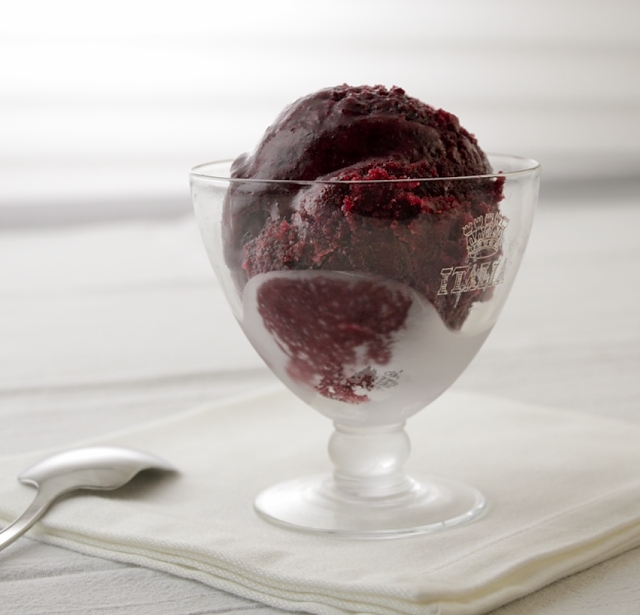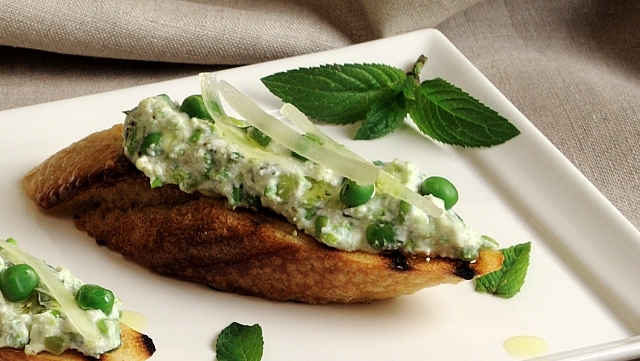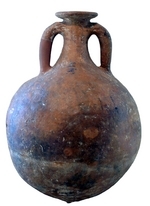Topic Index
The font size for a topic word is sized by the number of articles that reference that topic. The more articles the bigger the font.
Click on a word to search for posts with that topic. This page will reload with the search results.
Cappelletti and What Time Is Midnight Mass?
A Vino Aperitivo for the Season
It’s early on Christmas Eve when the phone rings in the parish office, and the caller asks “What time is Midnight Mass?” Honest. Every year at parishes around the world inquiring minds want to know. A friend who was a parish administrator herself said that she fielded dozens of such calls every Christmas. We all chuckled at the goofy question. And every Christmas Eve morning I called my friend at work, put on my silliest, most heavily accented voice and asked the very same question. I could hear the hesitation in her voice while she figured it out, and then she replied “And Merry Christmas to you too, Miss Adri.” It was our very own Christmas greeting.
But Christmas Eve Midnight mass presents its own logistical problems. What do you serve before Mass? We’ve eaten a big feast just hours before, but by the time 10 PM rolls around, as the rest of the relatives arrive for a visit and the drive to the family parish, everyone is ready for “a little something” to tide us over. Somehow when I think of Mass, and what to drink, I think of Italian vermouth – served straight up in a pretty etched glass. But it is Christmas, and that should have you seeing and serving red, the festive kind, crimson with citrus and herbal notes. I know. You think I am talking about Campari, or perhaps Aperol. Nope. Allow me to introduce you to Cappelletti. It’s not the Bridge convention, nor is it Modena’s famous pasta, the “little hats” bathed in capon broth so popular at this time of year. Read the remainder of this entry »
Negroni Float – Barman meets Soda Jerk
Blood Orange-Campari Sorbetto in a Negroni splashed with Prosecco
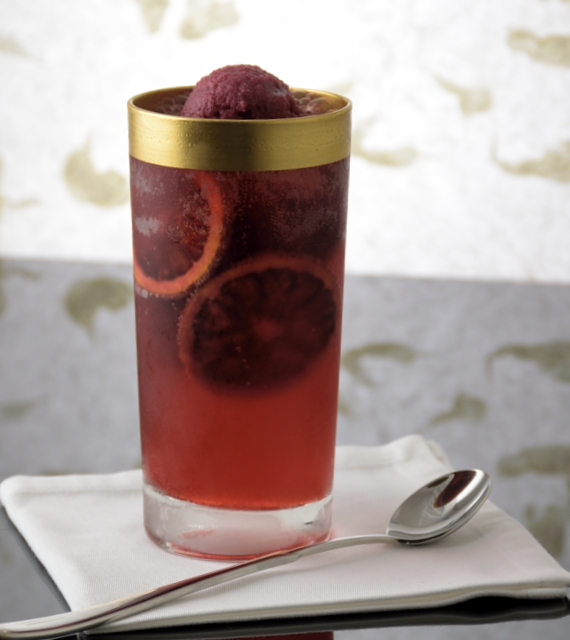
The bitters are excellent for your liver, the gin is bad for you. They balance each other.
– Orson Welles on the Negroni
The Negroni (nay-GROW-nee) is perhaps the quintessential aperitivo – one part gin, one part sweet vermouth, one part Campari, all of it over ice, with an orange round. Classic cocktail lore tells us the Negroni is a direct descendant of the Milano-Torino, a drink now known as the Americano. It happened like this: in 1919 at Florence’s Caffe Casoni Count Camillo Negroni asked barman Fosco Scarselli to add a bit of fortification, un ‘po piu robusto, to his Milano-Torino. Sig. Scarselli acquiesced to his patron’s wish, adding gin in place of seltzer. The deed done, Sig. Scarselli realized the two drinks looked quite alike. With a barman’s panache he substituted an orange garnish for the Milano-Torino’s lemon… Read the remainder of this entry »
Blackberry-Sangiovese Sorbetto
 My new ice cream machine has rendered the process of making ice cream, gelato, sorbetto and other frozen desserts very simple. I have been making so many, I haven’t had the time to put them up for everyone to enjoy. With summer on the wane, I figured I’d better get the recipes up soon.
My new ice cream machine has rendered the process of making ice cream, gelato, sorbetto and other frozen desserts very simple. I have been making so many, I haven’t had the time to put them up for everyone to enjoy. With summer on the wane, I figured I’d better get the recipes up soon.
A couple of weeks ago I returned home from the market with several pounds of plump blackberries. Dark and heavily perfumed, the berries were so sweet and flavorful I knew they deserved more than my basic berry sorbetto treatment. I remembered a recipe I had seen for Blackberry-Sangiovese Sorbetto in Gelato! by Pamela Sheldon Johns. Read the remainder of this entry »
Sweet Pea and Fava Crostini with Herbs and Ricotta
More with Pace da Poggio Etrusco Extra Virgin Olive Oil
The baby vegetables are in the Farmer’s Markets. The herb garden is planted, and tiny peas in their pods have made an appearance. My mint plants are already giving forth, their new leaves packed with fresh flavor. Spring has arrived, and with it have come the fava beans.
Travails with Fave or Size Does Matter
Preparing fave (FAH-vay, plural of fava) is a labor or love, or so some people say. The preparation of this member of the Fabaceae (bean family) is a point of great contention among the cooking community and for a time, a source of plunging self-esteem for me. To peel or not to peel? That is the question. The Great Fava Bean Debate of 2013 rages on. For years I labored (or not, depending on one’s point of view) in blissful ignorance of the aforementioned debate, happily zipping open the fava pods, removing the tiny beans from their downy resting spots and eating them. For me there was no third step. You know the one, the part where you peel the beans.
In the garden or at the market I selected firm, bright green pods, free of marks or blemishes. Patient harvesting or careful shopping rewarded me with tiny beans, sweet and tender, about the size of my little fingernail. I never bothered with the larger beans, having always thought them better suited to the compost heap than a diner’s stomach.
However there came a point at which I realized that everyone, food writers and friends alike, even food writing friends, was talking about peeling the fave. A terrible unease set in, the kind of self-doubt in which I specialize. Could I possibly be so rustica, so out of touch with civilized culinary technique? It seemed that everyone peeled those little beans before consuming them, whether raw or cooked. Then one day just a few weeks ago I was rescued from the ignominy of bean preparation inadequacy by none other than food writer Nancy Harmon Jenkins. She came down on the side of not to peel. Despite some formidable opposition, chief among them Paula Wolfert, Nancy stuck to her guns. There is no need to peel, she declared. It is simply a matter of knowing how to pick fave, and you should pick them young. Thanks, Nancy. A girl needs her heroes. Read the remainder of this entry »
Pace da Poggio Etrusco Extra Virgin Olive Oil
Eggplant with Roasted Tomatoes, Baked Ricotta and Herbs
Man has cultivated the olive tree for thousands of years. The Roman Empire depended on olive oil for everything from perfumes and personal hygiene to cooking and lighting.
Pamela is a well known food writer, cookbook author, and cooking teacher. With her husband, artist Johnny Johns she operates Poggio Etrusco bed and breakfast and working farm in Montepulciano, Tuscany. On her organic certified farm property she grows the Moraiolo, Leccino, Correggiolo, and Pendolino olives that go into the oil. In November it is time for la raccolta delle olive, the olive harvest, when Pamela, her family and crew, and even guests, pick the fruit (yes, olives are fruit) entirely by hand. The careful harvesting, free of rakes and machines, assures that the fruit reaches the frantoio, the olive pressing mill, unbruised and in good condition, resulting in a pure, fresh tasting oil. Pamela’s hands on approach to the manufacture of her oil is a mixture of science, hard work, and respect for tradition and the earth. Read the remainder of this entry »
Cucina Povera by Pamela Sheldon Johns – A Book Review
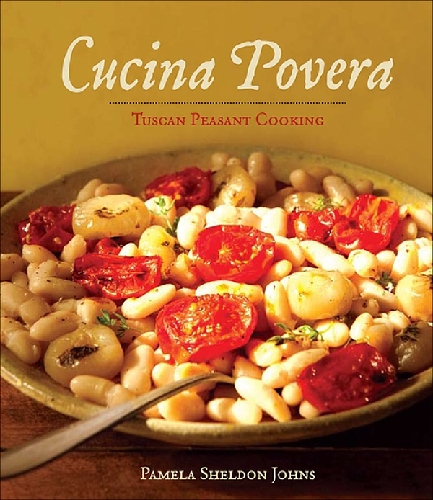
Cucina Povera: Tuscan Peasant Cooking
Let us pause in life’s pleasures and count its many tears,
While we all sup sorrow with the poor;
There’s a song that will linger forever in our ears;
Oh hard times come again no more.
“Hard Times” Stephen Foster (American songwriter 1826-1864)
I was bowled over when I received a copy of this cookbook to review. Its subject is Tuscan peasant cooking, and true to its folk, the Mangiafagioli (beaneaters), pictured on the cover is a bowl of Roasted Tomatoes, Beans and Onions – peasant food if ever there was. This is a simple dish, economical and easy to prepare, but more than that it is representative of the soul satisfying fare within. This dish like so many others in the book can be put together without fuss, yielding flavor greater than the sum of its parts.
Throughout history the working class of Italy has been no stranger to hard times. Read the remainder of this entry »

